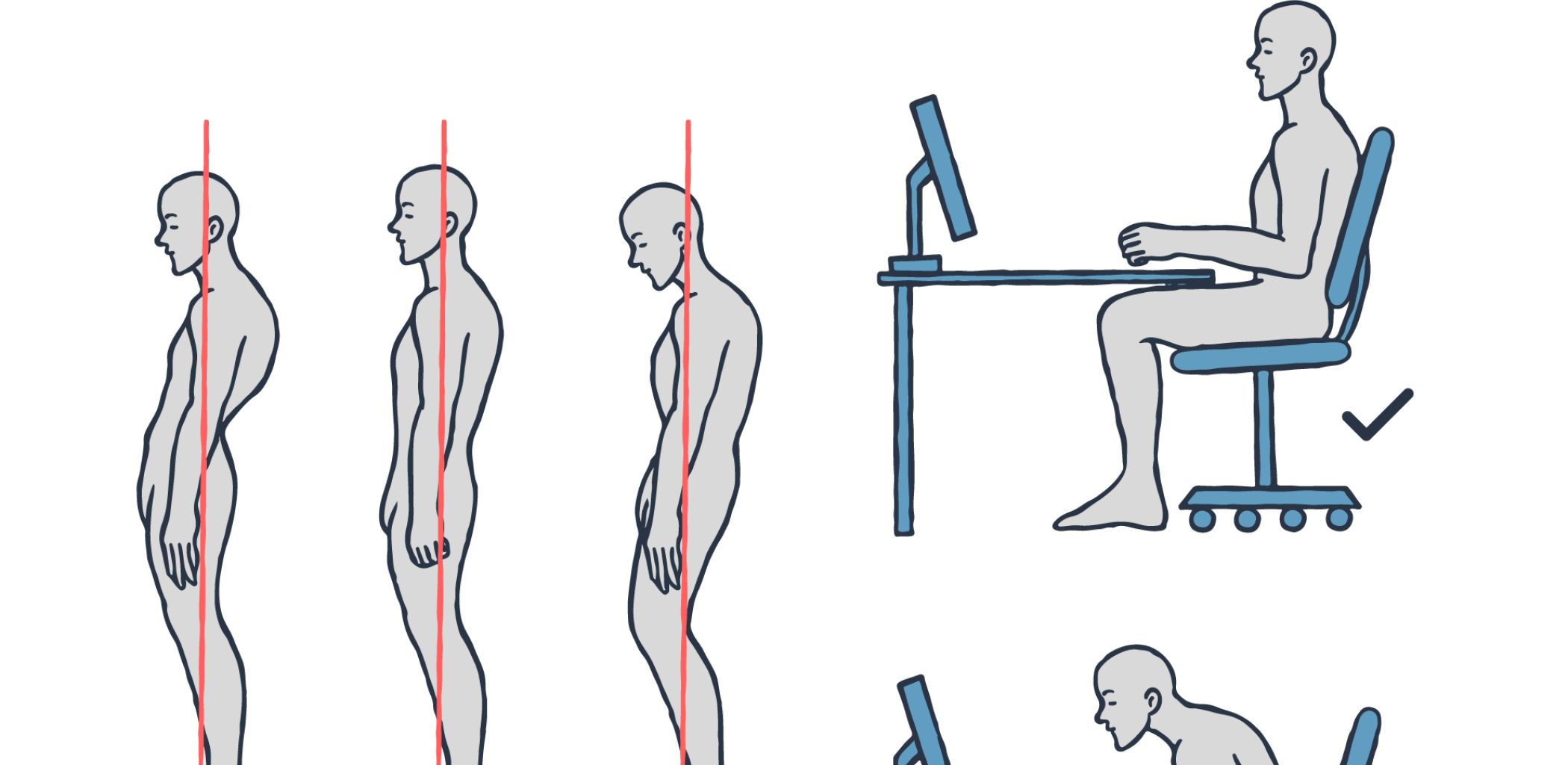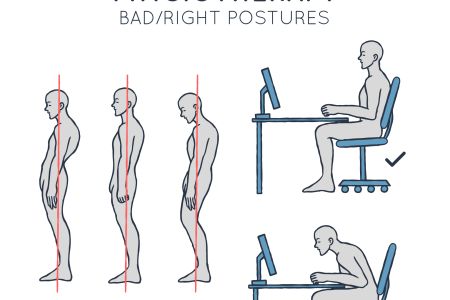
Common phrases like “stand up straight” and “sit up tall” all refer to correcting your posture. But what exactly are we trying to fix and what does good posture look like? According to the U.S National Library of Medicine, there are two types of posture: dynamic and static. Dynamic posture is how you carry your body in movement such as running or walking. Static posture, the focus of this blog, is the position you hold your body while standing, sitting, or lying down.
Good posture is frequently forgotten as an important contributor to long-term health. Maintaining good posture minimizes strain on your spine and its supporting muscles, ligaments, and tendons which consequently prevents pain and injuries. Constant slouching or slumping can result in degradation of the spine making it more fragile and prone to injuries like herniated discs. It can also decrease flexibility, reduce joint mobility, cause neck, shoulder, and back pain, disturb balance, and even increase difficulty in breathing and digestion.
The key to good standing posture is supporting the natural curvature of your spine without overemphasizing any of the three curves: neck, mid-back and low back. When standing, imagine a rope connected at three points on your body: head, shoulders, and hips, this rope should always be tight and straight. 3 points to remember for proper standing alignment:
- Line earlobes with the middle of your shoulders.
- Keep shoulders back, knees straight, and back straight.
- Tighten your abs but avoid tilting your pelvis forward.
Many of us work in environments that require us to sit for 8+ hours a day and at some point, we cross our legs and begin to slouch into a more comfortable position. As relaxing as these positions feel, they do not provide the best support for your spine and its associated muscles. For the best sitting posture, sit with your glutes touching the back of the chair, keeping your back straight, and relaxing your shoulders. The backrest of your chair should support the curve of your lower back. Uncross those legs and keep your feet flat on the floor! Crossing your legs shifts your pelvic alignment which can consequently affect the alignment of the rest of your body. Take frequent stretch breaks or quick strolls because sitting for an extended period in one position puts stress and strain in one area.
To get a personal postural assessment or examination of office ergonomics, contact us to learn more about our Corporate Ergonomic Wellness Workshops and how we can help you improve your posture.

What is Good Posture?

Why you may feel more pain during quarantine and how to handle it.

Any exercise is better than no exercise!

Travel Tips for the Holidays










